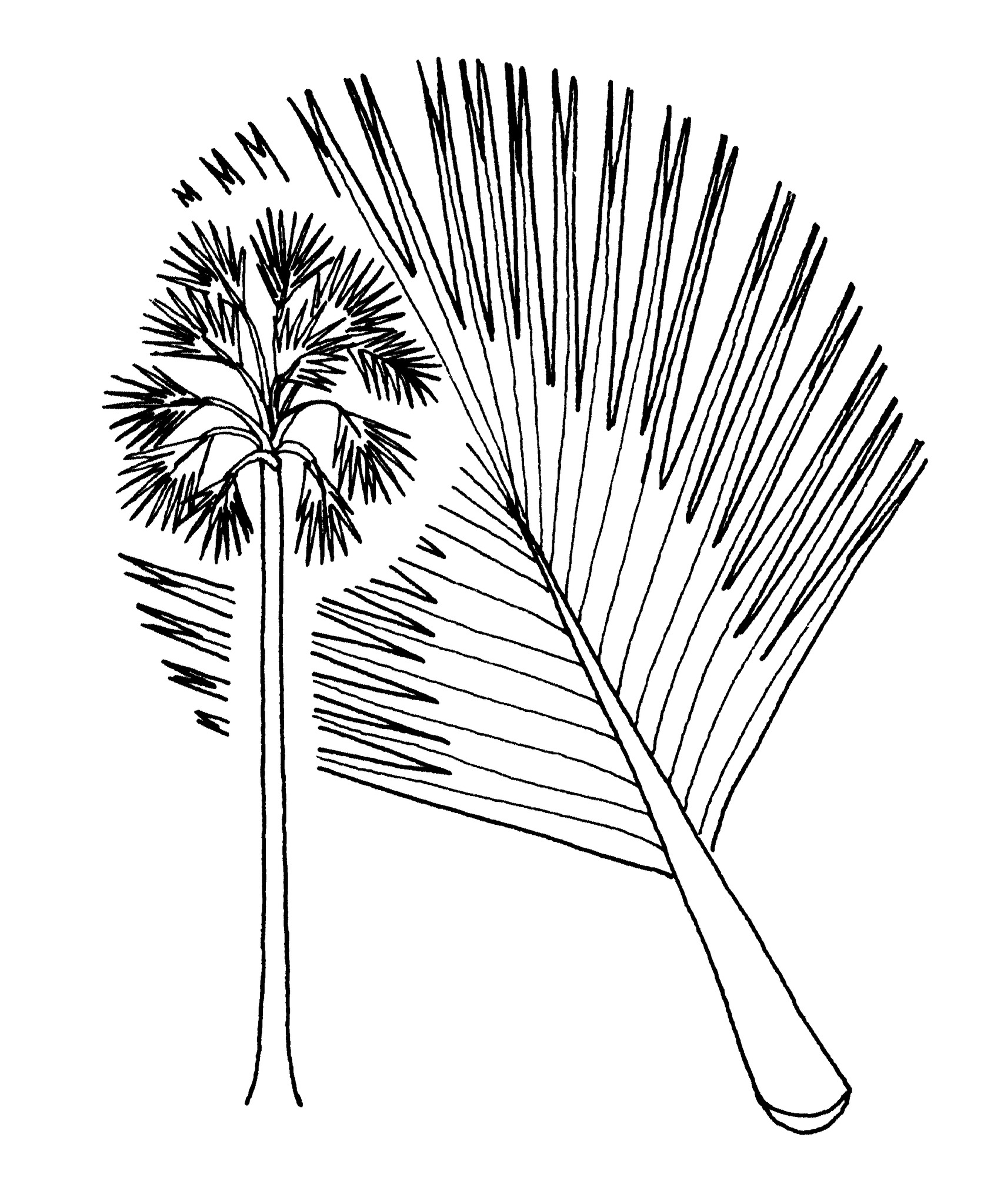
After W.T. Pritchard, 19th century British official in Polynesia.
Medium to large, solitary spineless and toothless palms. Trunk slender, closely ringed with leaf scars. Leaves fan-shaped and with a distinct midrib (costapalmate), large, in a heavy crown, divided one third to one half way to midrib. Leaf sheath soon forming a mass of fibres. Leaf stalk passing directly into midrib, smooth, generally hairy. Leaflets generally shallowly divided and usually hairy along the midrib. Inflorescence long-stalked, arising among the leaves, branched at the end of a long stalk. Fruit round to ovoid, containing 1 more or less round seed.
Popular palms in the tropics but rarely successful in cool to cold climates.
Natural habitats include coral atolls and dense moist to wet forests.
Leaves used for thatching or to make hats, baskets and fans. Immature fruit eaten.
Fresh seed takes 2-5 months to germinate.
Solitary palms with large fan-shaped leaves in a heavy crown. Inflorescence with a long basal stalk.
37 species distributed in Fiji, Tonga, Cook Islands, Solomon Islands and Hawaii (where the majority of species occur).
Beccari & Rock (1921), Hodel (1980).
Source: (2005). Arecaceae. In: . Horticultural Flora of South-eastern Australia. Volume 5. Flowering plants. Monocotyledons. The identification of garden and cultivated plants. University of New South Wales Press.
